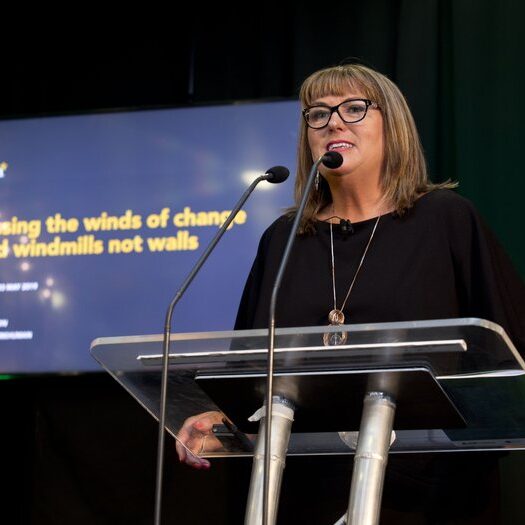RESEARCH FROM MCKINSEY SHOWS THAT DIVERSE COMPANIES TEND TO BE MORE SUCCESSFUL THAN THOSE THAT DO NOT VALUE OR WORK TOWARDS BUILDING A DIVERSE WORKPLACE.
Employees, too, prefer a diverse and inclusive workplace. In a recent global Workhuman survey, employees were asked: ‘How important is diversity, equity, and inclusion (DE&I) to you in terms of staying at your current organisation?’, and 72% responded with ‘somewhat or very important’. This percentage is even higher among Gen Z and Black employees at 86% and 87%, respectively. It is clear, then, that DE&I is a business imperative for leaders looking to retain and attract talent.
Gender diversity is a key part of DE&I within the workplace. Unfortunately, the tech industry is far behind, with women making up just 26% of the workforce. With technology evolving so rapidly in today’s digital-first world, navigating the tech industry can be even more challenging for women who have taken a career break and are now attempting to integrate back into their roles.

Dr Andrea C Johnson is VP global business systems at Workhuman and Chairperson of Women in Technology & Science, and is a passionate advocate for gender equality in STEM and creating new pathways for women in leadership.
RETURNING TO WORK
The pandemic has forever altered the way people work and interact with each other, with an increasing number of organisations adopting hybrid or remote models of work. Research has shown that more and more employers are now considering these new models more productive than the standard 9 to 5 office job. More women are now able to work around their other commitments and consider returning to the workforce due to this increased flexibility. Since their support systems, such as partners or parents, now also possess a heightened degree of flexibility, women can more successfully return to work after a break. To encourage more women back into the workforce and advance in their careers, organisations need to continue offering flexible working options. More women returning to tech also means increased diversity, which will attract more applicants.
Leaders should support women who have had a career gap and are struggling to acclimate back into the work environment. This will not only make them feel more welcome at work, but more appreciated too – which will, ultimately, improve employee retention, performance, and profitability. According to a study published by KPMG, career breaks are closely correlated with imposter syndrome for women, with 75% having experienced feelings of self-doubt in their professional lives. A solid internal support system at work is crucial in preventing self-doubt and feelings of inadequacy that can impede women’s return to work.
WHAT CAN LEADERS DO?
One way to support women returning to work is by establishing dedicated employee resource groups (ERGs) that provide them with strategies and resources for success. A dedicated group for women in tech, for example, could help support them and provide them with opportunities for allyship, mentorship, and sponsorship. A variety of external factors can influence women’s return to work, so it is imperative that these groups are aware of the issues affecting employees. Leaders should bear in mind that each employee is an individual – and that effective support may vary for each one. Listening to and understanding the individual needs of employees is essential for providing tailored support, which is beneficial not only to women returning to work, but to organisations as a whole. According to research by Workhuman, both men and women feel more secure when they are recognised and actively shown that their organisation values them and cares about their employee experience.
Organisations can take proactive measures to support women during the transition process. It is essential to have dedicated returnship schemes in place in order to accomplish this. By implementing initiatives such as these, companies will show their commitment to increasing gender diversity in technology and providing a workplace environment that welcomes different career paths and presents opportunities for talented individuals to join.
HOW RETURNSHIPS CAN HELP
Partnering with dedicated ‘returnship’ programmes is another way for organisations to support women getting back into the workforce. Specifically designed for women returning to work after a career break, these programmes offer them the necessary skills and experience they need to succeed. In sectors such as tech, where hiring and retaining talent is highly competitive, returnships should form part of a multi-channel approach to alternative talent strategies.
Essentially, these programmes encourage companies to be proactive and intentional in re-engaging women in the workplace. Providing a clear career progression path and removing barriers are two crucial components that organisations should focus on in order to facilitate women’s success.
A number of external returnship programmes, such as Women ReBOOT, provide support to women who are returning to work after taking a career break in the technology sector. Organisations may also wish to develop their own internal approach, designing customised programmes tailored to the needs of their employees and implementing them alongside existing programmes.
INCREASING GENDER DIVERSITY IN TECH
By providing dedicated support to women returning to work, making it as smooth a transition as possible, employers can ensure improved gender diversity within their organisations. When they are shown appreciation and support and frequently recognised for their contributions at work, women feel more confident about returning. Returnship programmes can be combined with existing ERGs or reward and recognition programmes for a more holistic approach to supporting those acclimating back into the workforce – and these steps will ensure that every employee has a positive experience. Ultimately, this will encourage more women into the tech sector and increase gender diversity.








